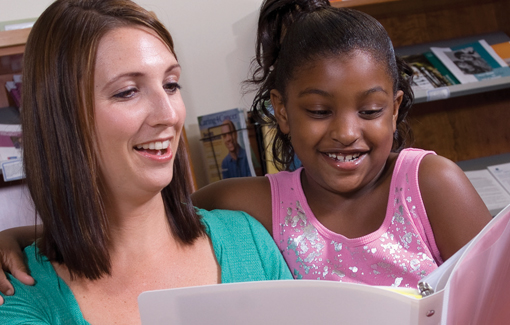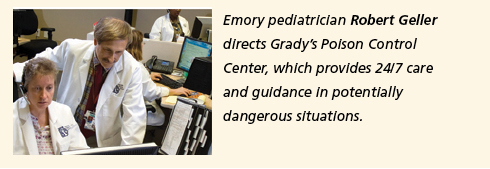In the community: Meeting vital needs

In addition to the millions of dollars provided by Emory physicians in charity care each year at each of Emory's own clinical facilities, Emory faculty provide 85% of physician care at Grady Memorial Hospital. This safety net public hospital has Atlanta's only level 1 trauma center and burn center, Georgia's only poison control center, and one of the country's largest and most comprehensive HIV/AIDS programs, among other lifesaving services.
Throughout the past decade, as indeed throughout the past century, Emory has provided a solid rock of support to Grady Hospital, making possible a huge amount of high-quality care, much of it to patients with little or no resources or medical coverage.
Grady has long been in dire financial straits, operating at a loss in 10 of the past 11 years. This past year, Grady was in grave danger of closing its doors. Leaders at Emory and Morehouse School of Medicine, which also provides care at Grady, worked closely with Atlanta business and other leaders to help resuscitate this vital facility.
Today, with a new nonprofit status, a new private board of business and community leaders, and a consequent infusion of private and government funding, Grady appears to be on the way to recovery.
Student work on behalf of Grady A pivotal force over the past year in discussions about how to save Grady Hospital was a student lobbying/advocacy nonprofit group founded at Emory. HealthSTAT (health students taking action together) began in 2001 when a handful of medical students from Emory and Morehouse decided to hold a candlelight vigil to raise awareness of the plight of the uninsured.

HealthSTAT’s "Grady Is Vital" campaign this year showed the sophistication and organizing power the group has attained during its seven years of existence. Students from schools throughout Georgia in medicine, nursing, pharmacy, physical therapy, and public health prepared fact sheets, delivered handwritten letters to the governor, mailed 5,000 postcards to the general public, organized tours of Grady for legislators, and held a rally attended by 350 students, residents, and faculty. HealthSTAT isn’t through, however. The students see Grady's problems as the canary in the coal mine and plan to continue advocating both for the hospital and for the uninsured.
Other student community efforts Pipeline Program—Created by Emory medical students, this program helps disadvantaged high school students learn more about science and medicine with the hope that they will consider possible careers in these fields. Medical students have worked with students at South Atlanta High School, 90% of whom live in households with income below the federal poverty line. Now, with medical students as teachers, these young people are learning how to use epidemiologic concepts to solve case studies. As one excited high-schooler said, "I never knew I was so smart!"
Emory MediShare—This is an offshoot of Project MediShare, which provides care to people in Haiti. Last year, students and faculty traveled to the town of Casse, whose residents typically must walk half a day on roads that often are flooded and impassable to access any medical care. Based on their work in a mobile clinic there, the students decided to create Project Casse in collaboration with students from Morehouse. The project’s goal is to transform a run-down dispensary in Casse into a permanent medical and maternity clinic.

